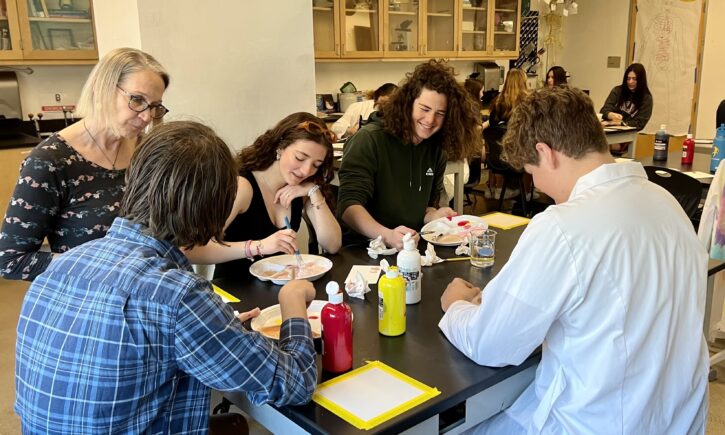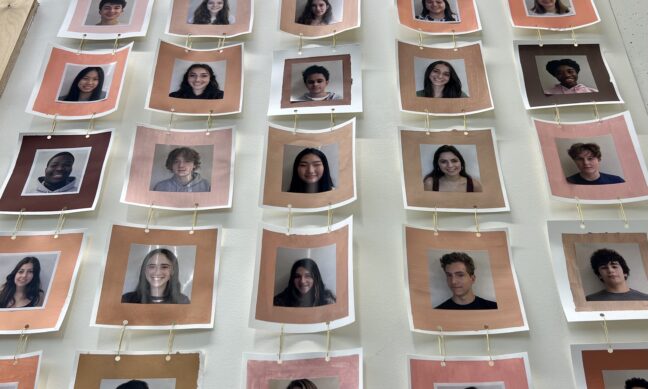Class: Biology Foundations
Grade: 10th
Teacher: Mr. Micari, Ms. Brooks, Ms. Wildes
Students studying human genetics and evolution mixed paints to match their unique skin tones for an instillation at Beaver entitled The Biology & Beauty of Skin Color. The project was inspired by photographer Angélica Daa’s photographic work Humanæ, a collection of over 4,000 images documenting various skin tones throughout the world.

Students started the project by formulating the correct amount of yellow, red, black, and white paint to arrive at their unique skin color. The process mirrors the variable expression of genes, as eumelanin and pheomelanin similarly combine to achieve one’s exact skin tone. After finding their color, remembering how it was achieved was one of the biggest challenges.
Mixing colors is really nuanced. It’s trial and error, just like science. It’s the idea of iteration. Students jump into getting a color but forget how they got there, which is a big learning curve. They appreciate the subtly of the skin tone.
-Ms. Brooks
As paint was being mixed, compared, and reformulated, several students found themselves discussing skin color itself. One table shared how their skin tones compared to their parents and grandparents. Another table searched for selfies to place alongside their paint swatches, comparing the colors.

Viewing science through an artistic lens reveals the similarities between the two disciplines. As Ms. Brooks states, “scientists and artists are both storytellers and risk-takers. When you actually get into working in science, it’s incredible creative.” The Biology & Beauty of Skin Color assignment showcases how scientific principles such as inquiry, experimentation, and iteration are also utilized in art. By having students explore human genetics through artistic expression, a deeper understanding of the topic is gained.
The Biology & Beauty of Skin Color is set to include work from all students spanning a four-year period from spring 2022 to spring 2026. Currently, you can check out the instillation in the science wing.

More about this course: This course will give students the opportunity to learn about the fundamentals of life, from the whole organism down to the molecular level. In this course, we will focus on a deeper understanding of the biological concepts of biochemistry, cellular biology, genetics, evolution, and comparative anatomy and physiology. This lab based science course will further develop scientific writing skills and help incorporate strategies to process and understand complex biological concepts.

